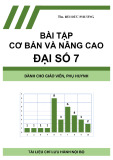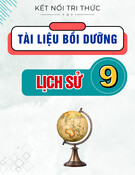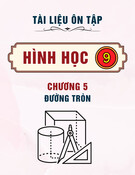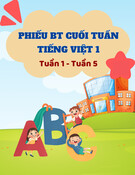
Đ I H C QU C GIAẠ Ọ Ố C NG HOÀ XÃ H I CH NGHĨA VI T NAMỘ Ộ Ủ Ệ
THÀNH PH H CHÍ MINHỐ Ồ Đ c l p - T do - H nh phúcộ ậ ự ạ
Đ C NG ÔN T P MÔN TI NG ANHỀ ƯƠ Ậ Ế
I. T V NG (10 câu)Ừ Ự
Ví d :ụ
Ch n ph ng án đúng (A ho c B, C, D) đ hoàn thành m i câu sau: ọ ươ ặ ể ỗ
1. He completely ________ with what I said.
A. accepted B. complained C. agreed D. argued
N i dung ôn t p:ộ ậ
1. Phrasal verb
2. Synonym
3. Collocation
4. Derivative
5. Prefix – Suffix
6. Commonly confused words
7. Words whose meanings are close
8. Appropriate words
Tài li u tham kh o:ệ ả
- Vince, M. Intermediate Language Practice. Macmillan Heinemann, 1998.
II. NG PHÁP (10 câu)Ữ
Ví d :ụ
Ch n phọ ư ng ơán (A ho c B, C, D) ng v i t / c m t có g ch chân c n ph i s a trong các câu sau: ặ ứ ớ ừ ụ ừ ạ ầ ả ử
21. When her dog (A) died, she (B) cried very (C) hardly for (D) half an hour.
N i dung ôn t p: ộ ậ
1. Tenses
Present Simple
Present Continuous
Past Simple
1

Past Continuous
Present Perfect
Present Perfect Continuous
Past Simple
Past Perfect
Past Perfect Continuous
Future Simple
Future Perfect
Future Perfect Continuous
Future Continuous
Be going to …
Non – Progressive Verbs
2. Modals
Can / could & is / was able to
Could do & could have done
Must & Can’t
May Vs Might (may/ might go /be going)
Must Vs Have to
Must / mustn’t / needn’t
Must Vs have got to
Should (= use of subjunctive) if… should
3. Gerunds
Object of verbs
V + O + gerund
- used after prepositions
Used of “for + Ving. / Expressions + ING form
4. Infinitives
Object of verbs
Different uses of to – infinitive
WH + to infinitive
V + Object + ing
2

* Different meanings between
V + Ob – infinitive / gerund
(Ex remember to do / doing)
5. Nouns
Count Nouns & Uncount Nouns
Agreement
Compound Nouns
Possessive Case vs of + noun
Noun vs Gerund
(Education vs educating)
The + adj (generic sense)
6. Pronouns
Personal pronouns
Reflexive pronouns
Possessive pronouns
Demonstrative pronouns
Definite pronouns
Indefinite pronouns
Relative pronouns
Agreement pronouns
7. Adjectives
- Comparison
- ING vs ED Adj
- Positions
- Used after linking verbs
- Verbs + O + Adj
8. Adverb
- Comparison
- Positions
- Commonly confused adverbs
(hard vs hardy
close vs closely …)
3

Intensifying adverbs
9. Articles
The indefinite articles a/an and the definite article the
Use of the articles a / an with countable nouns
Use of the with uncountable nouns
The before names of places
Zero article
10. Passive
Passive verb forms
Verbs not used in the passive (be died …)
It is said / known …
He is said / known + to infinitive
Passive after NEED
Causative:
Have sth done
Have sb do
Get sth done
Get sb to do …
11. Present Participle
Present Participles vs Past Part.
Uses of ING – clauses
Participles after conjunctions and prepositions
Participle clauses with their own subjects
Misrelated participles
12. Past Participle
ED – participles vs Simple Past
ED – clauses
Participle clauses with their own subjects
Misrelated participles
13. Expressing wishes
I wish I …
It’s time …
4

If only
14. Conditionals
Type 1, 2, 3
Implied Conditionals
If … not & Unless
15. Quantifiers & Determiners
Some Vs Any
No / none / any
Much /many / little / few / a lot / plenty
All / all of; most / most of; no / none of
Both / both of; either / either of; neither / neither of
Every / all / whole
Each / every
16. Parallel Structure
17. Conjunctions
Sentence punctuation
Wrong use of conjunctions
Conjunctions vs conjunctive adverbs
18. Prepositions
At / on / in (time)
For, during and while
By and until
By the time…
In / at / on (position)
Noun + preposition
Preposition + noun
Adjective + preposition
Verb + preposition
Verb + object + preposition
19. Commonly confused words and expressions
5

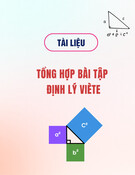


![Bài tập so sánh hơn và so sánh nhất của tính từ [kèm đáp án/mới nhất]](https://cdn.tailieu.vn/images/document/thumbnail/2025/20250808/nhatlinhluong27@gmail.com/135x160/77671754900604.jpg)
![Tài liệu tham khảo Tiếng Anh lớp 8 [mới nhất/hay nhất/chuẩn nhất]](https://cdn.tailieu.vn/images/document/thumbnail/2025/20250806/anhvan.knndl.htc@gmail.com/135x160/54311754535084.jpg)
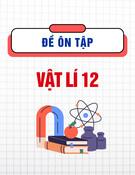
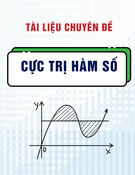
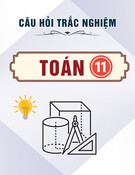
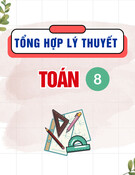
![Tài liệu Lý thuyết và Bài tập Tiếng Anh lớp 6 [Mới nhất]](https://cdn.tailieu.vn/images/document/thumbnail/2025/20250802/hoihoangdang@gmail.com/135x160/18041754292798.jpg)
